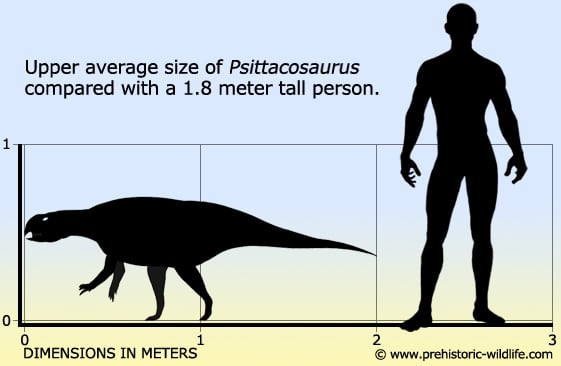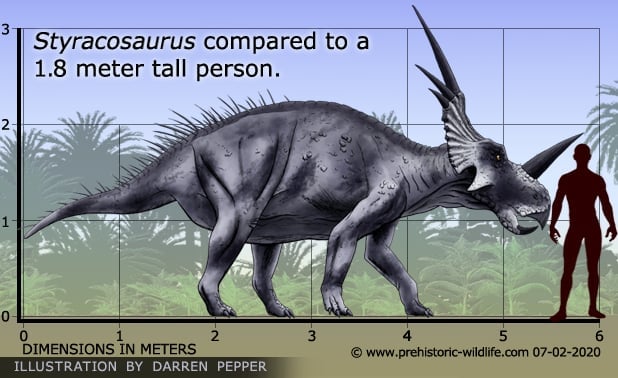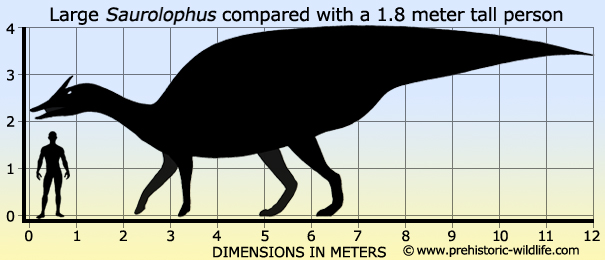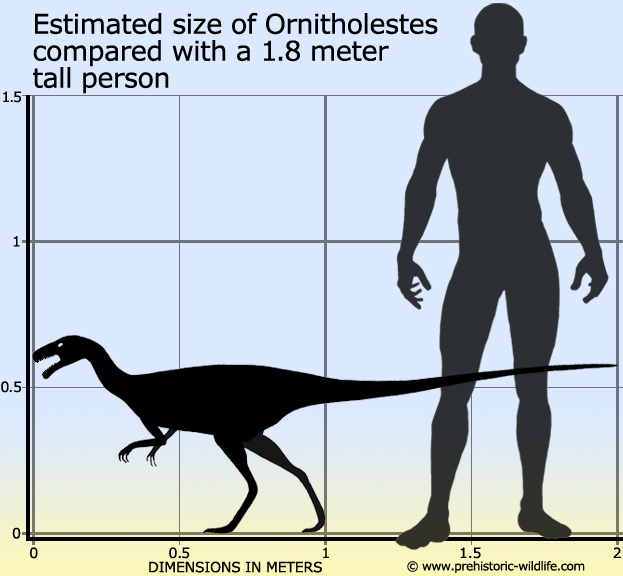chilli
Level 5 Council
Posts: 471  Mini-Profile Background: {"image":"https://i.pinimg.com/736x/ac/39/36/ac39363f985aeddc6dce992a0aca5954.jpg"}
Mini-Profile Text Color: f7f9fc
Mini-Profile Name Color: f7f9fc
Mini-Profile Background: {"image":"https://i.pinimg.com/736x/ac/39/36/ac39363f985aeddc6dce992a0aca5954.jpg"}
Mini-Profile Text Color: f7f9fc
Mini-Profile Name Color: f7f9fc
|
Post by chilli on Jun 9, 2021 15:55:34 GMT
This one almost looks like a giant horizontal cactus on legs! |
|
|
|
Post by Joey12 on Jun 10, 2021 2:54:02 GMT
Hello Australotitan
|
|
|
|
Post by Talira Greycrest on Jun 10, 2021 4:10:52 GMT
This dino is a primitive Ceratopsian: Name: PsittacosaurusPronunciation: Sit-tah-coe-sore-usMeaning of name: "Parrot lizard", in reference to its parrot-like beak.Species: P. mongoliensis, P. amitabha, P. gobiensis, P. sattayaraki, P. lujiatunensis, P. mazongshanensis, P. meileyingensis, P. neimongoliensis, P. ordosensis, P. sibiricus, P. sinensis, P. xinjiangensisSize: The largest species, P. lujiatunensis and P. sibiricus, measured 2 metres long, 0.5 metres tall and weighing between 25 and 80kgs.Family: Psittacosauridae.Diet: Herbivore. Fed on low-growing vegetation.First fossils found: Known from several specimens. First discovered during an American Museum of Natural History expedition to Mongolia's Gobi Desert in 1922. P. mongoliensis named by American palaeontologist, Henry Fairfield Osborn, in 1923. P. sinensis named in 1958. P. meileyingensis and P. xinjiangensis named in 1988. P. sattayaraki named in 1992. P. neimongoliensis and P. ordosensis named in 1996. P. mazongshanensis named in 1997. P. sibiricus named in 2000. P. lujiatunensis named in 2006. P. gobiensis named in 2010. P. amitabha named in 2019.Lived: Depending on species, lived between 126 and 101 million years ago from the Barremian stage through to the Albian stage of the Early Cretaceous in what is now Russia, Mongolia and China. |
|
|
|
Post by Joey12 on Jun 10, 2021 23:07:54 GMT
Interesting as my parrot is a Herbivore too.
|
|
|
|
Post by Talira Greycrest on Jun 11, 2021 1:44:55 GMT
This dino is a mid-sized Ceratopsian with a spiky neck shield: Name: StyracosaurusPronunciation: Sty-rak-oh-sore-us.Meaning of name: "Spiked lizard", in reference to the large spikes on its neck shield.Species: S. albertensisSize: 5.5 metres long, 2 metres high and weighing around 3 metric tonnes.Family: Centrosaurinae (a sub-family of Ceratopsidae).Diet: Herbivore. Fed on low-growing vegetation.First fossils found: Known from several individuals, the first of which was discovered by American-Canadian palaeontologist, Charles Mortram Sternberg, in Dinosaur Provincial Park, Alberta, Canada. Named by Canadian palaeontologist, Lawrence Lambe, in 1913. Bonebeds containing the remains of entire herds have also been found.Lived: 76 to 75 million years ago during the Campanian stage of the Late Cretaceous in what is now western Canada.
 |
|
|
|
Post by Joey12 on Jun 11, 2021 3:26:58 GMT
Just to add something I thought was funny, a couple years ago I was out and looking at clouds and one looked like a Dinosaur with a plan headed toward its mouth.  |
|
|
|
Post by Talira Greycrest on Jun 11, 2021 10:04:28 GMT
This large Hadrosaur lived in both Asia and the United States: Name: SaurolophusPronunciation: Sore-rol-low-fus.Meaning of name: "Lizard crest".Species: S. osborni, S. angustirostrisSize: Depending on species, measured between 8 and 13 metres long, between 4 and 6 metres tall when standing upright and weighing between 3 and 11 metric tonnes.Family: Saurolophinae (sub-family of Hadrosauridae).Diet: Herbivore. Fed on both high and low-growing vegetation.First fossils found: Known from skin impressions and several skeletons, some of which are almost complete. First discovered by American palaeontologist, Barnum Brown, in the Upper Cretaceous Horseshoe Canyon Formation of Alberta, Canada, in 1911. S. osborni named by Mr. Brown in 1912. Additional specimens discovered in northeast China, the United States and Mongolia's Gobi Desert during the mid/late 1940s. S. angustirostris named by Russian palaeontologist, Anatoly Konstantinovich Rozhdestvensky, in 1952.Lived: 70 to 66 million years ago during the Maastrichtian stage of the Late Cretaceous in what is now northeast China, western Canada, southern Mongolia and the Pacific region of the United States. |
|
Tix Mascot
Tech guru
Italy is my second homeland
Posts: 11,076  Mini-Profile Background: {"image":"http://4.bp.blogspot.com/-X5mhw13BJ7Y/TwKeZ3uM7YI/AAAAAAAABPw/D82go4Ny_8E/s1600/italy-background-8-787281.jpg","color":""}
Mini-Profile Text Color: 0ef8f1
Mini-Profile Name Color: f40d39
Year of Birth: 1961
Nationality: Norwegian
Mini-Profile Background: {"image":"http://4.bp.blogspot.com/-X5mhw13BJ7Y/TwKeZ3uM7YI/AAAAAAAABPw/D82go4Ny_8E/s1600/italy-background-8-787281.jpg","color":""}
Mini-Profile Text Color: 0ef8f1
Mini-Profile Name Color: f40d39
Year of Birth: 1961
Nationality: Norwegian
|
Post by Tix Mascot on Jun 11, 2021 12:19:02 GMT
Talira Greycrest, I'm impressed by the sheer volume of those creatures. I never imagined that there were so many types of dinosaurs and other prehistorical animals. Thanks for sharing this ifo with us! In a way, it's almost like travelling back in time to history class in 7th grade for a deep dive into something that we just briefly touched then.
|
|
|
|
Post by Talira Greycrest on Jun 11, 2021 13:11:57 GMT
Over 700 different species of dinosaurs have been identified and named. However, palaeontologists believe there are many more still waiting to be discovered.
|
|
|
|
Post by Joey12 on Jun 12, 2021 1:02:01 GMT
I agree Tix Mascot, It was touched on in school but it was fairly quick and you pretty much thought they all lived at the same time. Or just a couple periods in time. Hmm wonder if any came to Paradise Cay. |
|
|
|
Post by Talira Greycrest on Jun 12, 2021 1:20:14 GMT
This animal is a small Theropod from the Late Jurassic: Name: OrnitholestesPronunciation: Or-ni-tho-less-teez.Meaning of name: "Bird robber".Species: O. hermanniSize: Estimated to have measured around 2 metres long, 0.6 metres tall and weighing between 10 and 16kgs.Family: Ornitholestinae.Diet: Carnivore. Likely fed on lizards, small mammals, frogs and hatchling dinosaurs.First fossils found: Known only from a single, partial skeleton discovered by an American Museum of Natural History expedition to the Bone Cabin Quarry in Wyoming in July 1900. Named by American palaeontologist, Henry Fairfield Osborn, in 1903. Ornitholestes is often shown chasing the primitive bird, Archaeopteryx, despite the fact that, even though they lived at the same time, they lived on opposite sides of the world.Lived: 154 million years ago during the Kimmeridgian stage of the Late Jurassic in what is now the western United States. |
|
|
|
Post by Talira Greycrest on Jun 12, 2021 7:58:08 GMT
This dino is one of my personal favourite Theropods. Whilst it wasn't awfully big, it made up for that with its weaponry, speed and agility: Name: DeinonychusPronunciation: Die-non-e-cusMeaning of name: "Terrible claw", in reference to the 13cm-long claw on the second toe of each foot.Species: D. antirrhopusSize: 3.5 metres long, 1.5 metres tall and weighing between 70 and 100kgsFamily: Dromaeosauridae.Diet: CarnivoreFirst fossils found: Known from several specimens, the first of which was discovered in southern Montana in 1931. In 1964, a team led by American palaeontologist, John Harold Ostrom, discovered three partial Deinonychus skeletons lying close to the 6-metre-long skeleton of a Tenontosaurus. This led to the suggestion that Deinonychus may have hunted in packs. Named by Mr. Ostrom in 1969.Lived: 115 to 108 million years ago during the Aptian and Albian stages of the Early Cretaceous in what is now the western and south central United States.

Artist's impression of a trio of Deinonychus attacking a Tenontosaurus.

The feet of Deinonychus, showing the large, curved claws on the second toe. |
|
|
|
Post by Joey12 on Jun 12, 2021 8:42:00 GMT
Sure wouldn't want to deal with those feet. Probably very sharp to dig in to its prey.
|
|
|
|
Post by Talira Greycrest on Jun 12, 2021 10:11:52 GMT
Sure wouldn't want to deal with those feet. Probably very sharp to dig in to its prey. It was originally thought that these massive claws were used to disembowel prey, but it now seems the claws were more effective in climbing rather than in dealing killing blows. |
|
Tix Mascot
Tech guru
Italy is my second homeland
Posts: 11,076  Mini-Profile Background: {"image":"http://4.bp.blogspot.com/-X5mhw13BJ7Y/TwKeZ3uM7YI/AAAAAAAABPw/D82go4Ny_8E/s1600/italy-background-8-787281.jpg","color":""}
Mini-Profile Text Color: 0ef8f1
Mini-Profile Name Color: f40d39
Year of Birth: 1961
Nationality: Norwegian
Mini-Profile Background: {"image":"http://4.bp.blogspot.com/-X5mhw13BJ7Y/TwKeZ3uM7YI/AAAAAAAABPw/D82go4Ny_8E/s1600/italy-background-8-787281.jpg","color":""}
Mini-Profile Text Color: 0ef8f1
Mini-Profile Name Color: f40d39
Year of Birth: 1961
Nationality: Norwegian
|
Post by Tix Mascot on Jun 12, 2021 11:21:18 GMT
It was originally thought that these massive claws were used to disembowel prey, but it now seems the claws were more effective in climbing rather than in dealing killing blows. Intersting how theories change when researchers receive more information. |
|